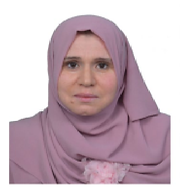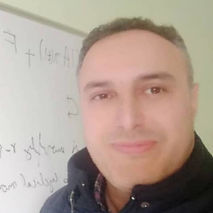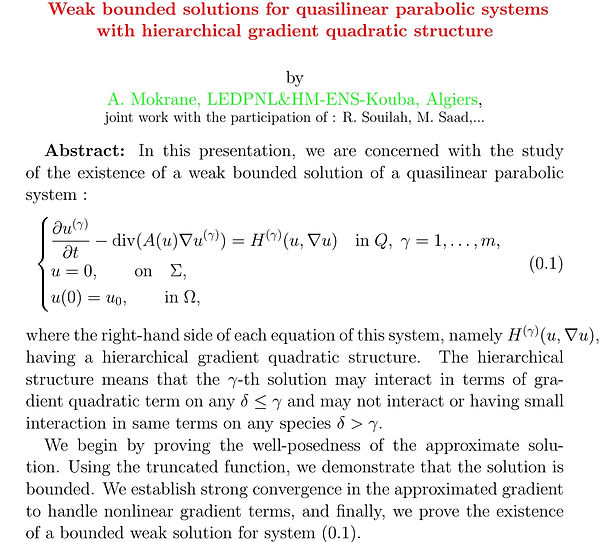National Conference: Mathematical Modeling for Dynamic Systems
(M2DS)
Juin 26-27, 2024 -Constantine- Algeria


Dr. Mounira Kesmia
Biography:
Mounira Kesmia is an Associate Professor at University Constantine 1- Frères Mentouri. Her field is Dynamical Systems, with a focus on applying mathematics in medicine. She is dedicated to educating and supervising students, exploring innovative insights and applications of dynamical systems to advance medical science and improve the health of individuals.

Pr . Tahar Haddad

Tahar Haddad is a Professor at the Department of Mathematics, University Mohammed Seddik Benyahia of Jijel, Algeria. He is an expert on the theoretical aspects of complementarity problems, nonsmooth dynamical systems, variational analysis. In addition, his research also involves applications of nonsmooth dynamical systems in engineering processes, in particular for the modeling of nonregular electrical circuits, a topic where subdiffrential and normal cone play a central role. He has published more than 30 research works in several prominent mathematics journals such as Mathemathical Programming, Journal of Differential Equations, SIAM Journal on Control and Optimization, Journal of Optimization Theory and Applications, Nonlinear Analysis: Hybrid Systems as well as engineering journal including Communications in Nonlinear Science and Numerical Simulation. He has supervised several Ph.D. students, mainly on topics concerning , nonsmooth dynamical systems and variational analysis. Deeply interested in conveying research knowledge to young generations, he has been actively involved in many national and international conferences.

Pr. Ammar Makhlouf


« Chaos Theory Applications in Electrophysiology: Predictive Control of Cardiac and Neural Dynamics »
Abstract
This work applies chaos theory to electrophysiology by analyzing chaotic phenomena in the electrical activity of heart cells and neurons. The objective is to diagnose and prevent pathological conditions. The first axis of this research focuses on predictive control to eliminate cardiac alternans and developing new control methods to suppress stable periodic dynamics. This study also involves developing a mathematical model for the action potential duration (APD) to obtain a new control parameter and explore bistabilities between different heart rhythms. In the second axis of the research, we aim to suppress stable periodic dynamics in continuous nonlinear dynamical systems to control neural systems and prevent brain disorders like epilepsy.
Nonsmooth Dynamical Systems: A gentle invitation
Abstract:
The goal of this conference is to provide an introduction to nonsmooth dynamical systems , which seem to be a sufficiently general framework for modeling various problems beyond equations. For example, this can be useful in electronics when the diodes appear in the circuit; in contact mechanics, when one considers friction. However, one uses many facts from other branches of mathematics such as convex analysis, variational analysis, non-smooth analysis, differential equations, differential inclusions, measure theory, numerical methods, etc.

